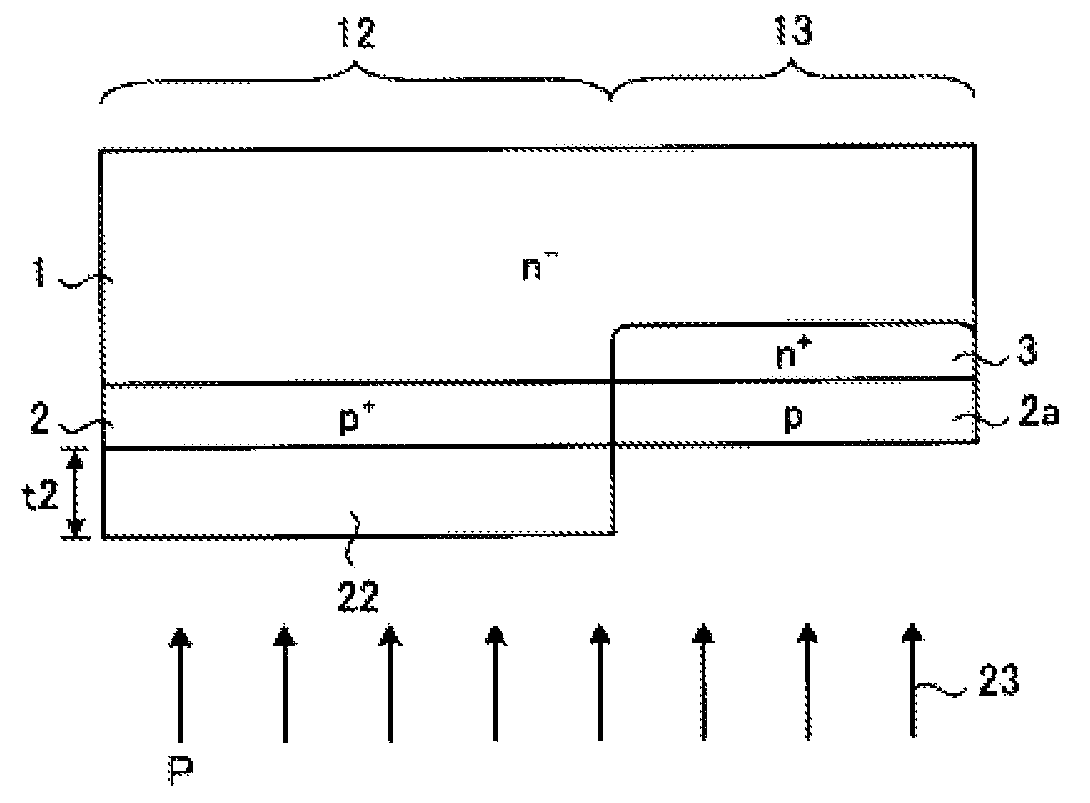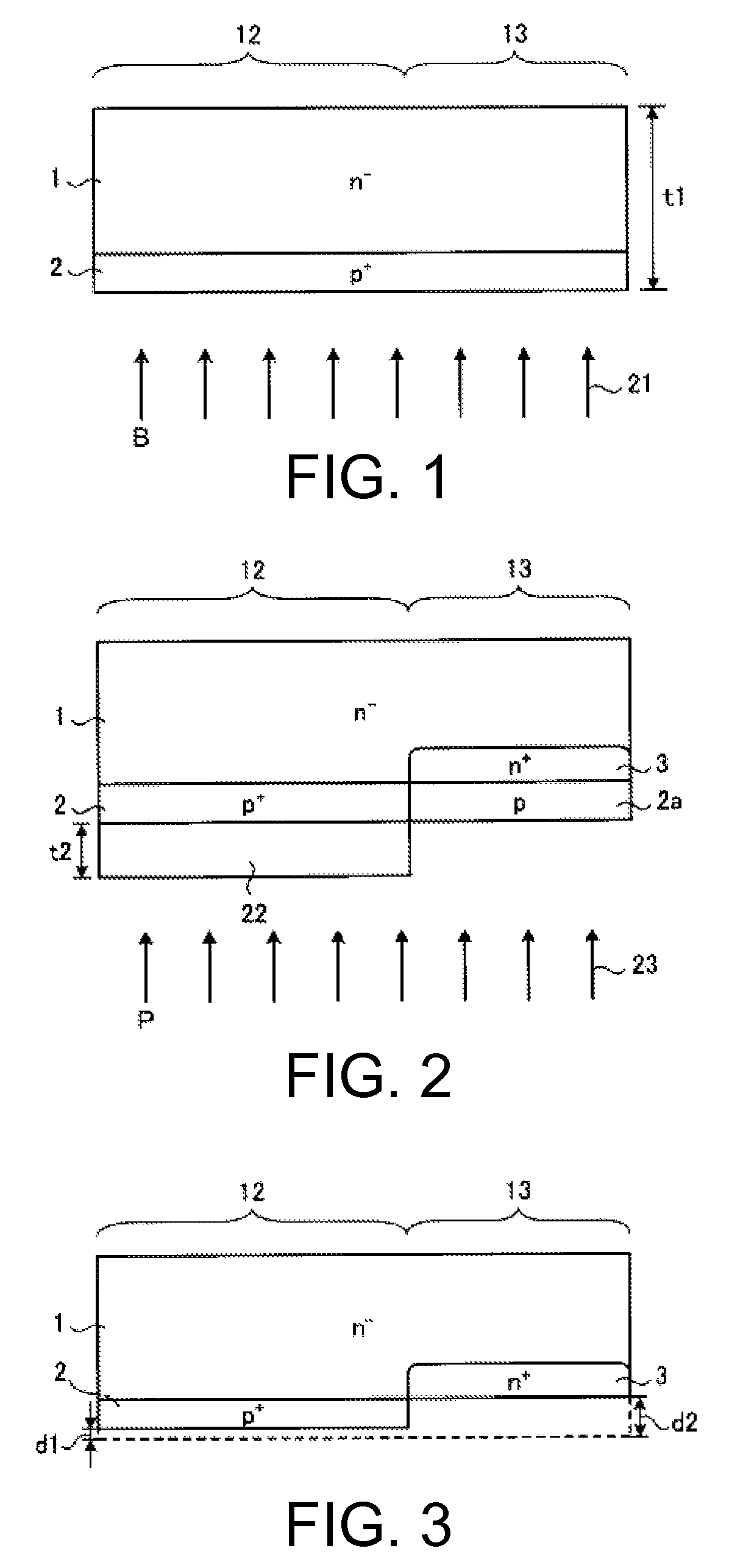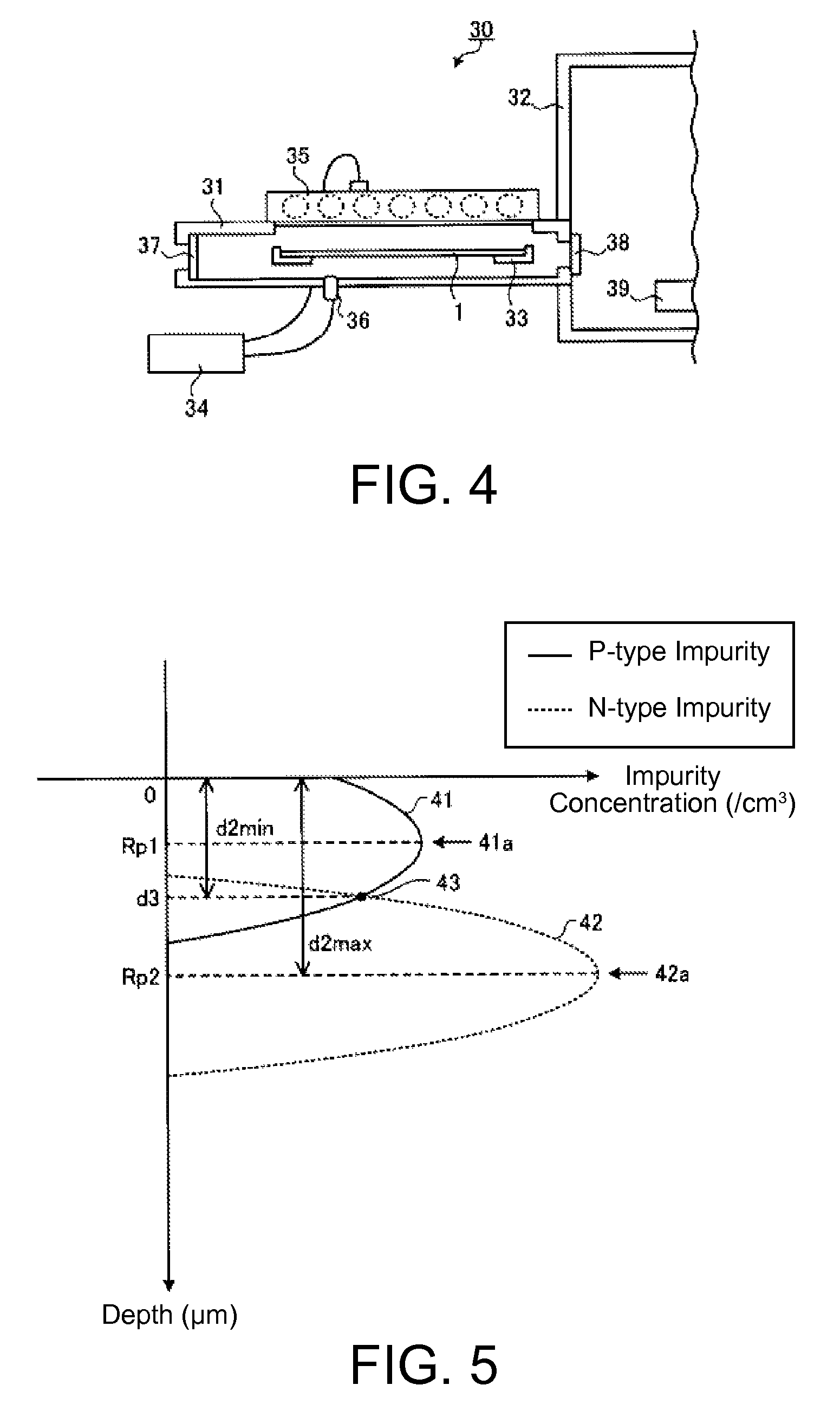Method of manufacturing semiconductor device
a manufacturing method and semiconductor technology, applied in the direction of semiconductor devices, electrical devices, transistors, etc., can solve the problems of increasing manufacturing costs, increasing the width of resist mask openings, and reducing yield, so as to reduce the alignment accuracy of patterning, increase manufacturing costs, and reduce manufacturing costs
- Summary
- Abstract
- Description
- Claims
- Application Information
AI Technical Summary
Benefits of technology
Problems solved by technology
Method used
Image
Examples
embodiment 1
[0046]A method of manufacturing a semiconductor device according to Embodiment 1 will be explained. FIGS. 1 to 3 are cross-sectional views of a semiconductor device of Embodiment 1 during the manufacturing thereof. In FIGS. 1 to 3, the front surface of an n− semiconductor wafer 1 is the top, but the primary surface of the n− semiconductor wafer 1 is flipped as appropriate in the respective steps. Furthermore, in FIGS. 1 to 3, the structure of the front surface side of the n− semiconductor wafer 1 is omitted. An example will be explained in which an RC-IGBT having an IGBT and FWD embedded in the same semiconductor chip is manufactured. In other words, an RC-IGBT is made having a p+ collector region provided on an IGBT area 12 and an n+ cathode region provided on an FWD area 13 on the rear surface of a semiconductor chip formed of the n− semiconductor wafer 1.
[0047]First, as shown in FIG. 1, a front surface element structure (not shown) of an IGBT and FWD is formed by a conventional m...
embodiment 2
[0073]Next, a method of manufacturing a semiconductor device according to Embodiment 2 will be described. FIG. 7 is a flowchart of an overview of the method of manufacturing a semiconductor device of Embodiment 2. The method of manufacturing a semiconductor device of Embodiment 2 differs from the method of manufacturing a semiconductor device in Embodiment 1 in the calculating scheme of the ashing rate and etching rate of the ashing and etching process.
[0074]As shown in FIG. 7, first an average penetration depth Rp1 and the dose of the p-type impurity during first ion implantation 21 (acceleration energy) are set (step S61). Next, an etching depth d2 of an n− semiconductor wafer 1 rear surface in an FWD area 13 is calculated as described above on the basis of the setting values in step S61 (step S62). Next, an average penetration depth Rp2 and the dose of the n-type impurity during second ion implantation 23 (acceleration energy) are set on the basis of the setting values in step S6...
embodiment 3
[0078]Next, a method of manufacturing a semiconductor device according to Embodiment 3 will be described. The method of manufacturing a semiconductor device of Embodiment 3 differs from the method of manufacturing a semiconductor device of Embodiment 1 in that the ashing and edging process is divided into two steps: performing ashing on a resist mask 22, and performing etching on a silicon part between a rear surface of a n− semiconductor wafer 1 in an FWD area 13 and an n+ area 3.
[0079]Specifically, in a manner similar to Embodiment 1, first the steps from the formation of the front surface element structure to a second ion implantation 23 are performed. Next, the resist mask 22 is removed using a conventional method, such as by performing ashing in an oxygen gas (oxygen plasma) atmosphere, for example. The oxygen atmosphere may have fluorine gas added thereto, in a manner similar to Embodiment 1. Next, the silicon part between the rear surface of the n− semiconductor wafer 1 in th...
PUM
 Login to View More
Login to View More Abstract
Description
Claims
Application Information
 Login to View More
Login to View More - R&D
- Intellectual Property
- Life Sciences
- Materials
- Tech Scout
- Unparalleled Data Quality
- Higher Quality Content
- 60% Fewer Hallucinations
Browse by: Latest US Patents, China's latest patents, Technical Efficacy Thesaurus, Application Domain, Technology Topic, Popular Technical Reports.
© 2025 PatSnap. All rights reserved.Legal|Privacy policy|Modern Slavery Act Transparency Statement|Sitemap|About US| Contact US: help@patsnap.com



